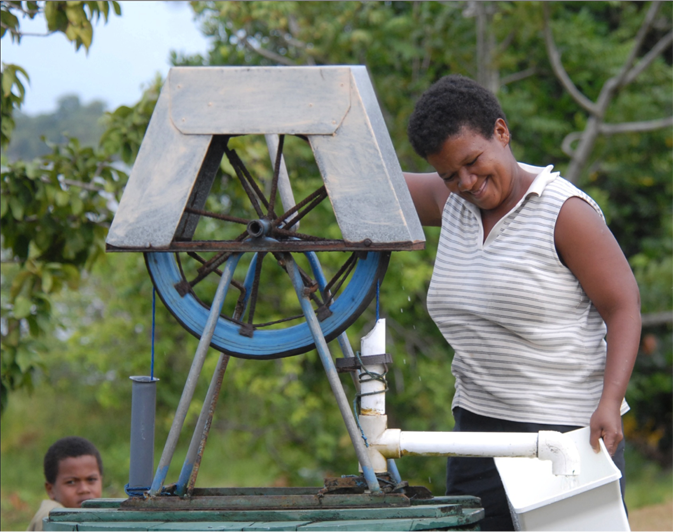

Miskito families protect Nicaragua’s ecological treasures

Plowing, planting and raising rice, beans, cassava and bananas is a daily task for Javier Smith Lino, a peasant from the village of Waspam, in Nicaragua’s North Atlantic Autonomous Region. It’s hard labor, but he depends on the crops to feed his nine children.
Land is life for Javier’s family, and for 276 other families in this community of mostly Miskito indigenous people living along Nicaragua’s border with Honduras. But that life has changed radically ever since the community gained a supply of clean energy, thanks to an initiative of the Millennium Development Goals Achievement Fund (MDG-F).
Empowering communities
The joint United Nations programme, one of six funded by the MDG-F in Nicaragua, focused on providing renewable energy and increasing incomes and services to rural populations in the zone near the Bosawas Biosphere Reserve, the largest in Central America, while at the same time enlisting the communities to manage the watershed and other natural resources.
It was part of the MDG-F’s efforts to help countries achieve the Millennium Development Goals (MDGs) of reducing poverty and inequalities in the world, with a particular focus on the most disadvantaged populations, including women and indigenous communities.
The Bosawas Biosphere Reserve is one of the central elements of the so-called "Heart of the Mesoamerican Biological Corridor," known for its rich biodiversity and numerous rare and endangered species, such as the giant anteater, Baird's tapir and spider monkey, among others.
The programme set up water and sanitation systems, an agroforesty program and a communication strategy for environmental education which focused on women’s roles and risk management. Families now receive health services and adults who cannot read and write participate in special evening educational programs.
Renewable energy
Under one of the programme’s initiatives, solar panels were installed in households, empowering families not only to manage their own resources, but also to work together to generate a community fund to maintain the power system.
Contributions to the fund are collected monthly in each of the seven participating communities. As part of the effort to increase women’s participation in decision-making, 70% of the committee which manages the fund is made up of women. In addition, community leaders were trained in maintenance, so that if panels fail, the communities themselves can repair them.
Obtaining energy through photovoltaic systems avoids the production of air pollutants, thus preventing acid rain. If the homes of the 276 families served by the joint programme were powered electrically instead of by solar panels, they would require 11.7 gallons of fuel a day.
The joint United Nations programme “Local and regional environmental management for the management of natural resources and provision of environmental services” was a collaboration between the Nicaraguan government and seven agencies of the United Nations (UNDP, UNESCO, UNIDO, UNEP, WHO, UNICEF and WFP). The programme targeted MDG 7, which seeks to ensure environmental sustainability.